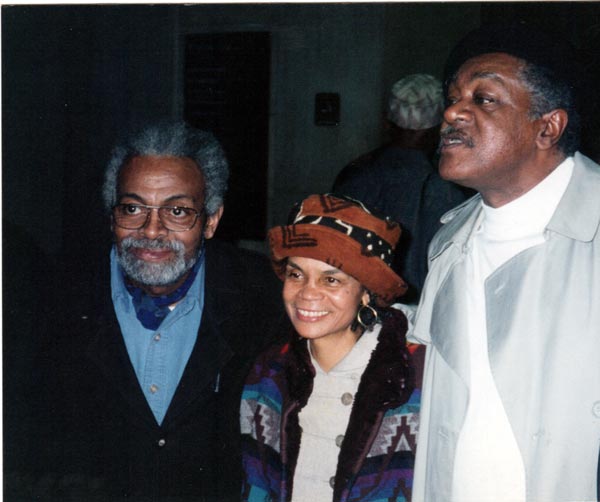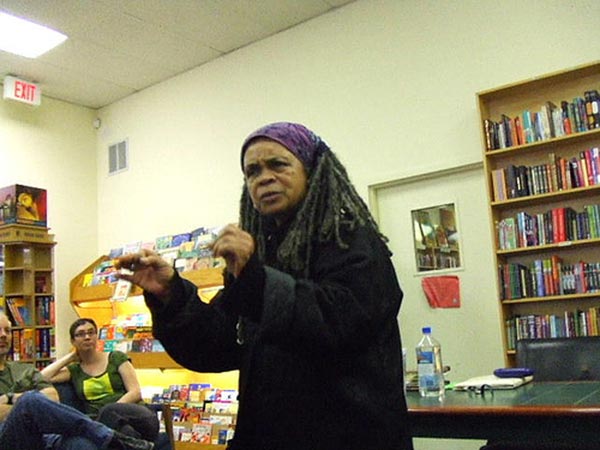SECTION 12
Black Arts Movement
As the artistic sister movement to Black Power, the Black Arts Movement was overtly and intentionally political in its various literary expressions. Building on the tenets of cultural nationalism, Black Power, and self-determination, and responding to the assassination of Malcolm X, the artists, poets, and writers sought to study the human condition of post-civil rights society. Growing out of artist collectives in Harlem, New York, and Michigan, the literary giants of the movement began to produce, publish, and show work that directly embodied a Black Power/nationalist perspective. Art, instead of being something far removed from politics, was all about protest and reworking an artistic aesthetic that could embody the cultural and political movement of Black Power.
Sonia Sanchez and Amiri Baraka, and others, circa 1996.
Source: Courtesy of M. Songhai, photographer.
As a leader in this cultural revolution, Amiri Baraka, started the renowned theater group Spirit House, which employed guerrilla theater--staging dramas in the streets, in schools, in parks--that unveiled both the structural racism of American society and the power of a collective black identity. Poets Haki Madhubuti and Sekou Toure were instrumental in leading a movement in poetry that connected an African past to the experience of blacks in America. As Madhubuti described it, Black Arts allowed the artist to define him- or herself and the political struggles of that era, on their own terms. These artists, along with Sonia Sanchez, Nikki Giovanni, Ed Bullins, and Mari Evans, not only sought to change the literary terms of the engaged intellectual while supporting the black nationalist movement, but were also activists who led campaigns to elect blacks to positions of authority.



